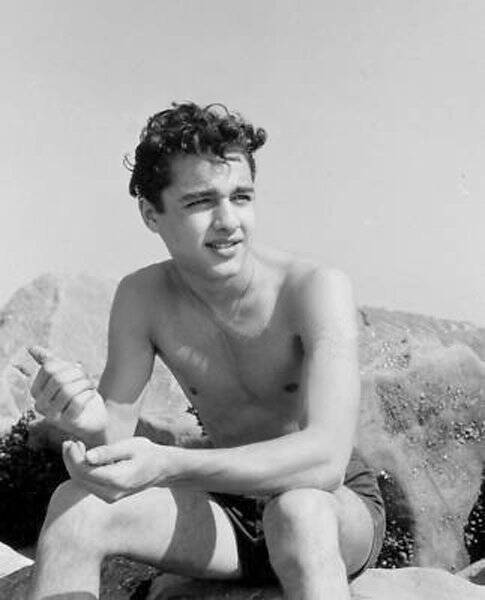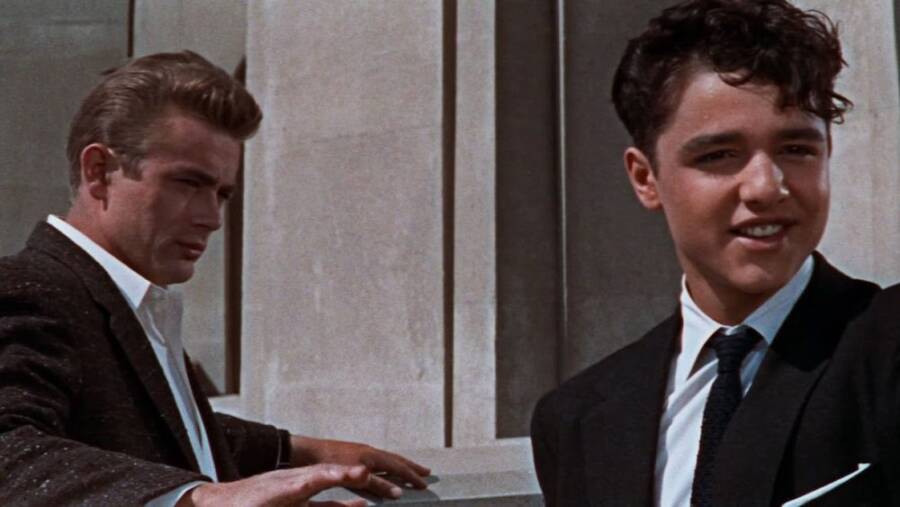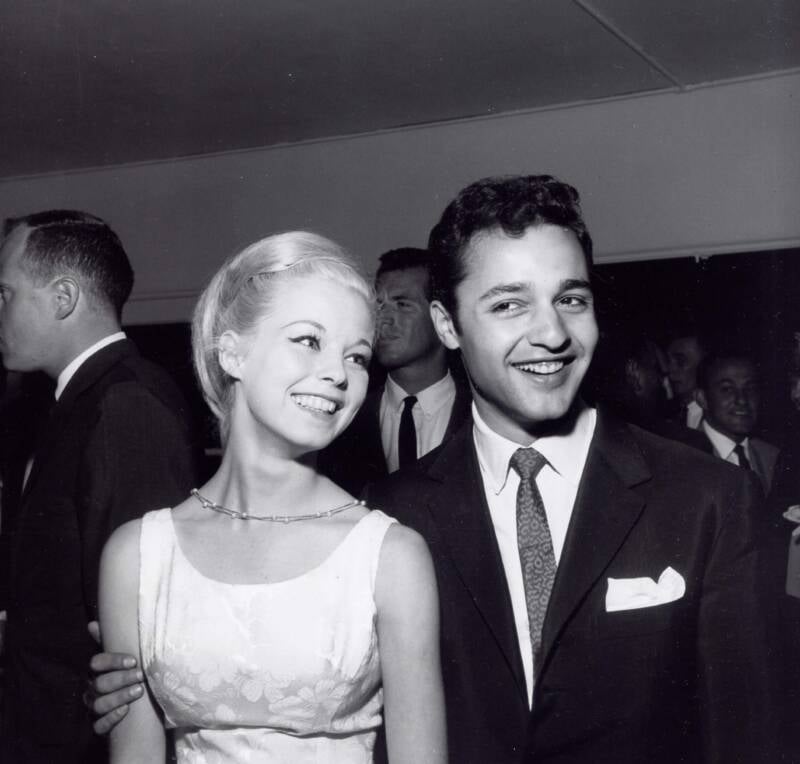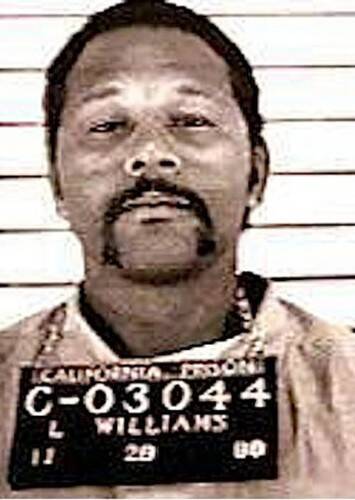Known for his “troubled teen” roles, Sal Mineo was one of Hollywood’s first openly queer actors before he was tragically stabbed to death at the age of 37.

RGR Collection / Alamy Stock PhotoSal Mineo, an American actor who starred in films from the 1950s to the 1970s.
In 1955, a young actor named Sal Mineo appeared as John “Plato” Crawford in the film Rebel Without A Cause alongside James Dean and Natalie Wood. The role catapulted Mineo to stardom, making him a teen heartthrob practically overnight and securing him an Oscar nomination for Best Supporting Actor.
Throughout the 1950s, Mineo took on several more “troubled teen” roles, earning him the nickname “Switchblade Kid.” Tragically, this name would come to take on ironic new meaning when Mineo was stabbed to death outside his Hollywood home in 1976.
This is the story of Sal Mineo, the trailblazing LGBTQ+ actor who was killed in a robbery gone wrong.
The Early Life Of Sal Mineo
Born Jan. 10, 1939 in New York City, Sal Mineo was the son of Josephine and Salvatore Sr., a casket maker from Sicily.
At eight years old, Sal Mineo reportedly became involved with street gangs in the Bronx. To keep him out of the streets, his mother signed him up for dancing and acting lessons. Mineo was a hard worker with innate talent and charisma, and it didn’t take long for him to break into theater.
His first professional performance was the role of Salvatore in Tennessee Williams’ play The Rose Tattoo in 1951. From there, Mineo landed roles in a number of other stage productions, including The King and I and Oscar Wilde’s Salome.

Fire Island Pines Historical Preservation SocietyA young Sal Mineo.
Mineo made his big-screen debut in the 1955 film Six Bridges to Cross. That same year, Mineo also appeared in the film The Private War of Major Benson. But it wasn’t until he landed a supporting role in the 1955 film Rebel Without A Cause that Sal Mineo truly became a household name.
Making It Big In Hollywood
Sal Mineo’s big break was the 1955 romantic drama Rebel Without A Cause, starring James Dean and Natalie Wood.
The film was a critical and box office hit, earning Mineo his first Academy Award nomination at only 17 years old for his portrayal of the disturbed teen John “Plato” Crawford.
It also cemented Sal Mineo into the minds of the American youth. Before long, “Mineo Mania” gripped the nation; every week, the teen heartthrob received thousands of letters from fans across the United States.
From there, the offers came pouring in. Throughout the 1950s, Mineo acted in several Hollywood films, including Giant (1956), Crime in the Streets (1956), The Young Don’t Cry (1957), and Dino (1957). In many of these films, Mineo took on the role of a “troubled teen” — a role into which he had found himself pigeonholed since Rebel Without A Cause.
Meanwhile, Mineo also dipped his toes in the music industry. He released several songs in the 1950s, including “Start Movin'” and “Lasting Love,” which both charted on the Billboard Top 100.
But as Mineo aged, he also outgrew the roles he’d been typecast into throughout his career. He soon realized he needed to blaze a new trail for himself to remain relevant in the cutthroat world of Hollywood.

Warner BrothersSal Mineo (right) in Rebel Without A Cause (1955).
Later Career And Professional Struggles
In the 1960s, Sal Mineo was struggling to find acting roles, despite having proven himself to be a capable actor.
“The prevailing winds around Sal in the early ’60s were anything but favorable,” wrote film critic Peter Bogdanovich, according to Michael Gregg Mich’s biography Sal Mineo. “The old established snobs in Hollywood could never quite forgive him his teenage popularity.”
No longer a teen, Mineo had aged out of the parts that had made him famous.
“I went through a time when my name was mud in Hollywood,” Mineo said. “I was getting older, and nobody wanted to give me a chance to try anything else… I had a choice to make. I could sit back and feel sorry for myself, blaming Hollywood for having exploited me, or I could live. I decided to live.”
He managed to snag a few more film roles, playing small parts in The Greatest Story Ever Told (1965) and Escape from the Planet of the Apes (1971). He also tried his hand at directing and started to carve out opportunities for himself. In 1969, he directed and starred in the play Fortune and Men’s Eyes, a prison drama which explored themes of homosexuality and power.
Just a couple of years later, Mineo would come out as bisexual, making him one of the first openly queer actors in Hollywood.
Sal Mineo Comes Out As Bisexual

ZUMA Press, Inc. / Alamy Stock PhotoSal Mineo with his fiancée, Jill Haworth. The couple met on the set of the 1960 film Exodus, but reportedly broke off their engagement after Mineo had an affair with a man.
In a bombshell interview with Boze Hadleigh in 1972, Sal Mineo revealed that he was bisexual, joking that he had “a girl in every port — and a couple of guys in every port too.”
“I don’t like having to just do straight parts, or gay parts, and I don’t like to be told I can only love a woman — or a guy,” Mineo said.
Around this time, Mineo also confessed that he had had feelings for his Rebel Without A Cause co-star James Dean. Mineo and Dean had such palpable chemistry in the film that some speculated they had an off-screen relationship. But according to Crime Magazine, Mineo claimed he hadn’t been aware of his sexuality at the time.
“If I’d understood back then that a guy could be in love with another one, it would have happened,” he said. “But I didn’t come to that realization for a few more years and then it was too late for Jimmy and me.”
Mineo’s openness about his sexuality may have contributed to his dwindling job offers. But it didn’t stop the actor from pursuing his dreams, and by 1976, Mineo’s career had begun to pick up again. That year, he appeared as a bisexual character in the stage comedy P.S. Your Cat Is Dead in San Francisco. The success of the show took Mineo back to Los Angeles, and he reportedly looked forward to this new chapter in his life.
Unfortunately, it wouldn’t last long. Mineo was fatally stabbed outside his home only a few weeks later.
The Tragic Death Of Sal Mineo

University of Southern California LibrariesPolice investigate the scene of Sal Mineo’s death.
Shortly before 10 p.m. on Feb. 12, 1976, Sal Mineo returned home from a rehearsal of P.S. Your Cat Is Dead. He parked his car in a carport behind his West Hollywood apartment building and started walking toward his home when a man approached him.
The interaction was swift. The man stabbed Mineo in the heart; Mineo began bleeding profusely.
No one witnessed Sal Mineo’s murder, but a handful of people heard his cries for help. Multiple witnesses who arrived on the scene shortly after the attack reported seeing a suspicious white man with long hair fleeing from the area.
When authorities arrived, they found Mineo on the ground with a 10-foot flow of blood coming from his chest. He was pronounced dead from a massive hemorrhage at 9:55 p.m.
Initially, investigators suspected Mineo’s killer was someone he knew. They started looking into his relationships. The actor had kept multiple address books full of names and phone numbers. The police called up dozens of men who may have had relationships with Mineo, and even visited the gay bars Mineo frequented in search of clues. Everywhere they turned, they met dead ends.
But soon, in a surprising turn of events, investigators would determine that Sal Mineo’s death was not a targeted attack, but simply a petty robbery gone wrong.
The Search For A Killer Turns Up Surprising Evidence
In May 1977, a young woman contacted a DA’s informant to confess that she knew who killed Sal Mineo.
According to a 2018 Hollywood Reporter article, the woman’s husband, Lionel Ray Williams, a young pizza delivery man with a criminal record, had come home the night of the stabbing with a bloody shirt and told her he’d “just stabbed a dude” in Hollywood.
Later, when a news report about Mineo came on the TV, Williams reportedly told her, “That’s the dude I killed.”

Public DomainLionel Ray Williams is allegedly responsible for the stabbing death of Sal Mineo.
According to Williams’ wife, Williams had been hiding out at an apartment complex in Hollywood, intending to rob someone, when a “young-looking white dude” parked his car, spotted Williams, and started yelling. Williams stabbed him in the chest and ran away without taking any money.
Lionel Williams did not fit the description of the man witnesses had seen running from the scene. He was shorter and Black. Still, it was possible that witnesses had misidentified the suspect, or else had spotted a second man running after Williams. But police needed stronger evidence tying Williams to Sal Mineo’s death before they could charge him.
That evidence finally came in 1977, when Williams was serving a sentence for check forgery. That year, a deputy claimed to have overheard Williams tell his cellmate, “I killed a dude a while back. An actor by the name of Sal Mineo.” Another guard soon reported hearing Williams make this same claim.
Finally, Lionel Williams was charged with the murder of Sal Mineo.
In March 1979, Williams was sentenced to at least 50 years in prison for a string of robberies and for the second-degree murder of Sal Mineo. He was paroled in 1990 after serving just 12 years of his sentence.
For his part, Williams has repeatedly denied any involvement in the murder, and his conviction remains controversial to this day, with critics claiming there wasn’t enough evidence to support claims that Williams had killed Mineo.
As for Sal Mineo, his family buried him at the Gate of Heaven Cemetery in Westchester County, New York. Although his life was tragically cut short, Mineo is remembered not only for his impressive performances alongside Hollywood’s biggest stars, but for his trailblazing career as an open member of the LGBTQ+ community in 1970s Hollywood.
After reading about the life and death of Sal Mineo, dive into the baffling death of Natalie Wood, Mineo’s Rebel Without a Cause co-star. Then, read the story of Michael Massee, the actor who accidentally killed Brandon Lee while filming The Crow.





